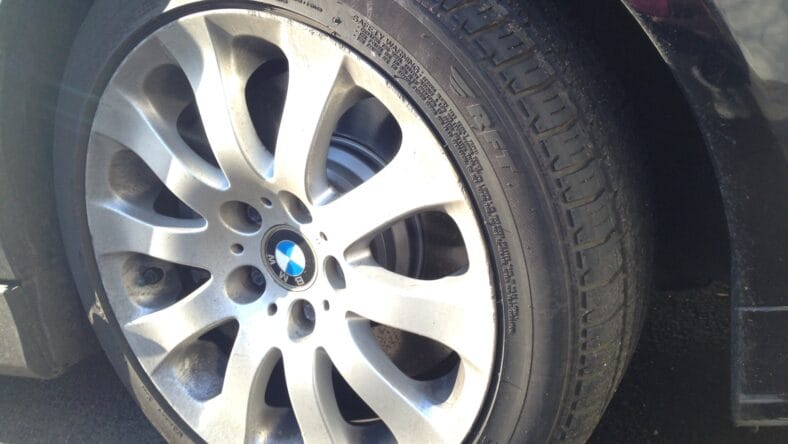Run Flat Tires: The Most Civil Way to Have a Flat Tire

Never have a flat tire again? Yes, it’s possible.
A really great thing happened to me recently: I had a flat tire.
Or rather, I didn’t have a flat tire, I had a damaged run flat tire. Because I have run flat tires on my car, it’s impossible to have a truly flat tire.
A Girls Guide to Cars may earn a commission from links contained on this page, but don’t worry, we only recommend products we love? And, there is no additional cost to the buyer when a purchase is made by clicking these links.
What Are Run Flat Tires?
I first heard about run flats when I was thinking of buying my car, and this was a major selling point. Run flat tires don’t ever actually go flat. They are made of very stiff rubber and a very thin inner tube that when fully deflated, still can support the weight of the car. You can drive 100 miles or so on a flat tire, which means you never need to change a tire on the side of the road, you don’t have to call for roadside assistance and you don’t have to stop what you’re doing get the tire changed. You just drive your car to the tire dealer and have it taken care of.
How Do You Know If You Have Them?
I discovered I had a flat tire when the tire pressure monitor sensor went off. I reset it, according to the manufacturer’s instructions and it quickly came back on again.
A few days later, when I had time, I took the car to the car dealer. The tire was flat, I was told, and it would have to be replaced. So they replaced it. An hour, a cup of coffee and $250 later, I was on my way. While the tire was expensive and I could have gotten it cheaper if I’d gone to a tire store rather than the dealer, I was happy that I could have the tire changed at my convenience, I didn’t have to wait for a tow truck or roadside assistance, and I wasn’t left stranded by the experience.
Further reading: Our Continental run flat tire review

Make sure your tires are in good condition. Photo: Scotty Reiss
These Are the Pros, But of Course, There Are Cons.
Run flats are more expensive than regular tires.
Partially because they are ‘performance’ tires designed for high end or performance cars, and partially because they are a smaller part of the market, they tend to be more expensive. Also, when you have a damaged run flat tire, you most likely will have to replace it; they can’t be patched or reused. However, I’ve never had a flat that I didn’t have to replace (isn’t that an urban myth?).
Run flat tires are also a rougher, louder ride. Every time you hit a pothole it feels as if you’ve hit a deer—it can be jarring and you’re sure you’ve done damage to your car (even though you most likely haven’t).
Further reading: Michelin is helping teens to learn about tire safety
But Here’s the Good News:
Run flat tires are about to become more common. Tire companies, realizing that consumers like the idea of never having a flat tire, that most new cars are built with TPMS, or tire pressure monitoring sensors—necessary because you can’t tell that a run flat tire is flat by looking at it—and that shedding the cost and weight of a spare tire ($200 and 70 lbs!) saves money and fuel, they’ve stepped up product development.
Soon expect to hear about new run flats that are more comfortable to drive and less expensive. And, if you have an older car without a TPMS, you can still switch to run flats: A TPMS system can be purchased at an auto parts store for under $200.
Have a thought or comment? Share it with us on social media! You can find us on Instagram, Facebook, Twitter and LinkedIn. And be sure to sign up for our email newsletter!
Car Shopping
Need a new car? Whether shopping for a new car or a used car we recommend using our car shopping service.
Tire Shopping
Need new tires? We recommend Tire Rack.
Car Repair
Need to get your car repaired? We recommend Repair Pal. Exclusively just for Girls Guide to Cars readers, call (877) 323-1708 to speak to RepairPal Car Genius for FREE automotive repair advice and if needed to find the right shop for you!
